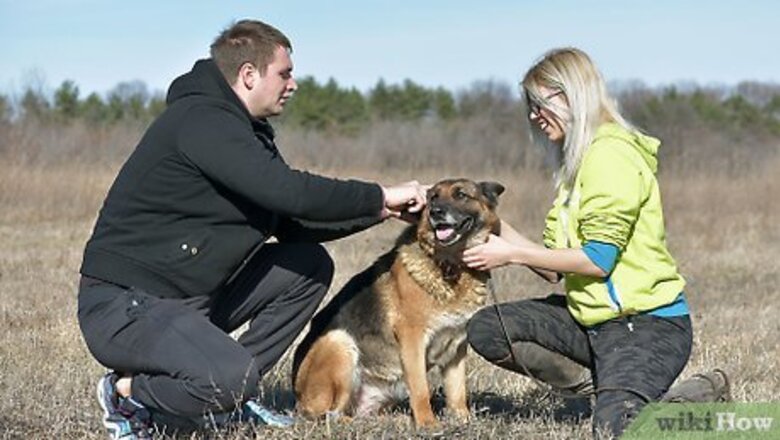
views
Choosing a Collar
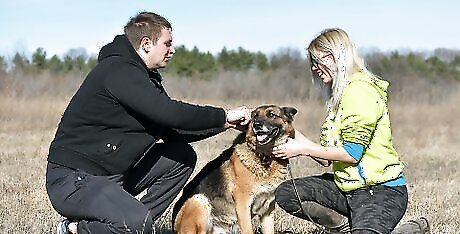
Talk to a certified dog training professional. A prong collar is not simply another piece of walking equipment like a harness or a gentle leader. It is a training device. A prong collar should not be used without consulting a professional dog trainer. A certified dog trainer will likely have experience using a prong collar or choke chain to discipline a dog. If used incorrectly, prong collars can be ineffective or even painful. A prong collar is used as part of a longterm training process that teaches your dog why pulling is not appropriate. It should not be used for walks that occur outside of training time. Casually using the collar for walks does not teach your dog pulling is inappropriate. It only teaches him pulling while wearing the prong collar is inappropriate. Talk to a trainer about how and when to best use the collar.
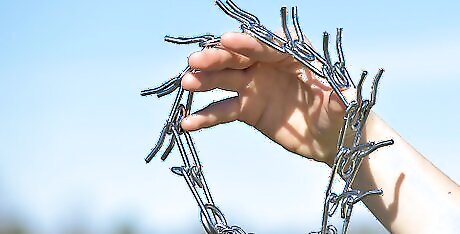
Purchase a collar. Many people are wary of prong collars due to the potential for pain. However, purchasing the right kind of prong collar lessens the likelihood your dog will experience pain while wearing it. Quality prong collars are designed to gently pinch the loose skin around the dog's neck, providing negative reinforcement in the event of pulling and misbehaving. A good collar will never puncture your dog's skin. The right size is important. Collars are divided by weight distinction, so know how much your dog weighs before selecting a collar. If you buy a collar labeled "For 100-120 pounds" for a 75 pound dog, this is far more likely to cause your dog pain and discomfort than a properly sized collar. Buy a collar from a certified trainer or a certified trainer's website. Prong collars sold at chain stores like Petco are often not as well made and the prongs have sharp rather than rounded edges. This results in puncturing rather than pinching your dog's skin, which can lead to aggression during training sessions. Never buy a prong collar with rubber-tipped prongs. Many people think such an investment is more ethical but rubber can rub against your dog's hair, causing pain. Metal, on the other hand, moves smoothly over a dog's coat.
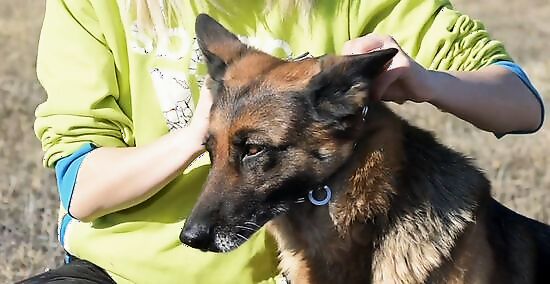
Make sure you know how to properly fit the collar. A prong collar must be placed around a dog's neck in a specific manner to be safe and helpful for training purposes. A prong collar should sit right behind the ears and under the jaw. Placing the collar lower than this will make the collar ineffective. The part of the collar that hooks onto a leash should be facing upward, just behind a dog's ears. Never clip the collar below a dog's jaw or on the side of the neck. The collar should fit snugly as it doesn't move around from the proper place. If the collar is loose, consider removing one of the prongs.
Using the Collar Properly
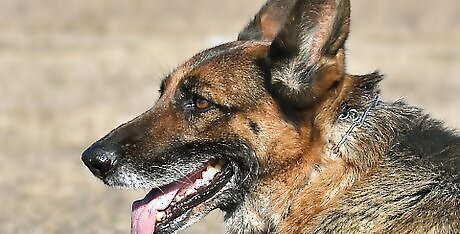
Use for only an hour at a time. A prong collar is a training device and not designed for longterm use. It is not your dog's primary collar and should not be used on casual walks or outings. Use the collar for no more than one hour and only during designated training sessions. Using the collar any longer could irritate your dog's neck. It is dangerous to use a prong collar as your primary walking collar. Dogs learn by association. If, in the long term, your dog learns to associate pain with pulling he'll also learn to associate negativity with events that cause him to pull. Most friendly dogs pull in response to seeing other people and animals. If a prong collar is used on every walk, your dog will learn to associate people and animals with pain. With time, he'll become timid and even aggressive in the presence of others and might even begin growling and biting.
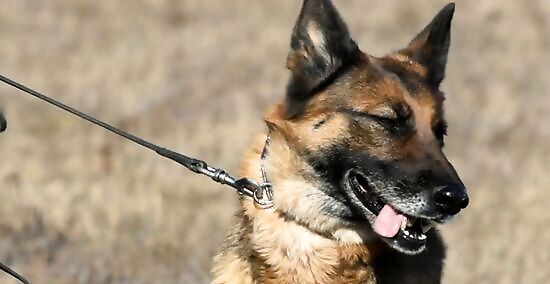
Use short tugs to correct behavior. A dog should never be allowed to freely tug on a prong collar. Prong collars are used during training sessions only to briefly correct behaviors. Use short, firm tugs when your dog pulls or lunges in response to stimuli. Then, release the pressure. Your dog should let up when he feels the pull and it's unlikely you'll need much more than a quick tug. Prong collar mimics other dogs biting. A nip on the back of the neck from another pack member signifies a dog has stepped out of line and needs to behave. Constantly pulling or putting pressure on a dog's neck does not simulate a biting effect but rather causes a constant negative sensation. You do not want your dog to associate walks with pain.
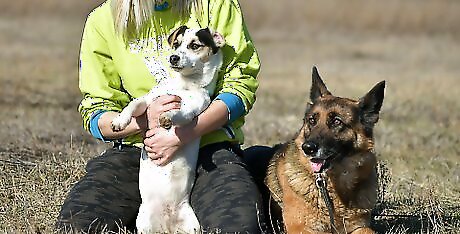
Do not use a prong collar for a puppy. Prong collars are designed for larger, untrained dogs in order to teach leash manners. They are usually a last resort for dogs whose pulling problems are not resolved through other means. Puppies are new to walking and should not start off with the most intense level of training collar. This will only succeed in scaring a puppy. Also, prong collars are not safe until at least 5 or 6 months of age and, even then, they are not recommended unless other training methods have been exhausted.
Ceasing Use
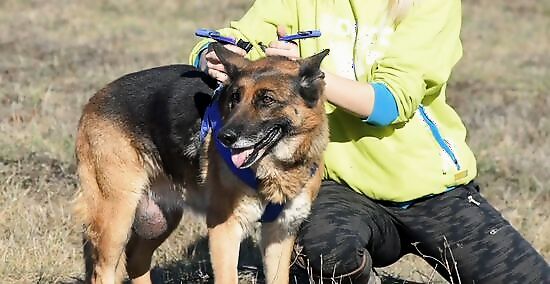
Use a harness or gentle leader for walks. As stated, prong collars are used for training. Preferably use them under the supervision of a certified dog trainer. A better option for walking would be harness or gentle leader as they discourage heavy pulling but do so without putting unnecessary pressure on a dog's neck.
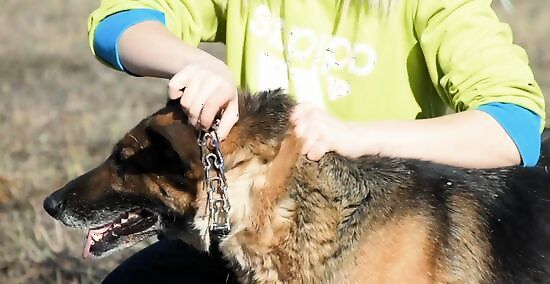
Take the collar off when you're not supervising your dog. Prong collars should not stay on a dog's neck like a regular collar. Prongs can easily catch on objects leading a dog to become ensnared. If they pull to hard, they can choke and pass out. Prong collars can even be fatal if you leave them on without supervising your dog. It's not really necessary to leave a prong collar on when you're not training your dog. Unlike a conventional collar, prong collars do not contain tags or identifying information. They're merely used to train a dog and serve no other purpose.
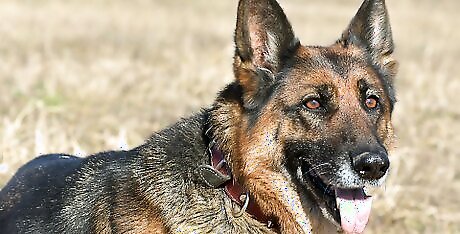
Stop using the collar once your dog no longer needs it. Prong collars are not meant for longterm use. Working with a certified trainer, get your dog to a place where he has learned proper leash manners and no longer pulls. Once your dog has mastered good walking techniques, you no longer need to use the collar.




















Comments
0 comment